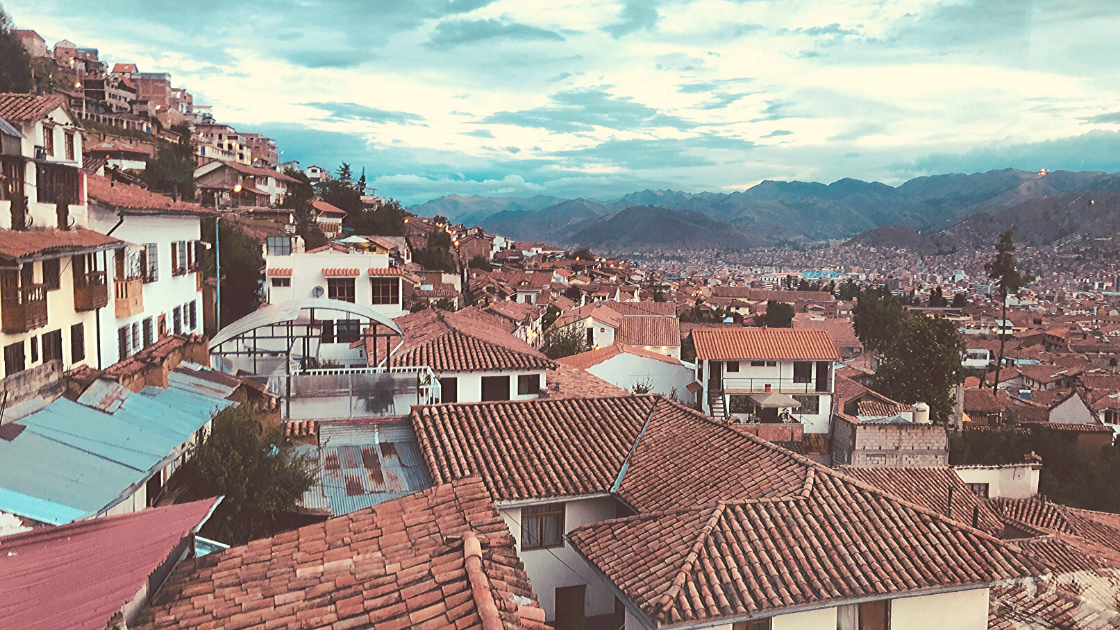
Culturas Peru Travel and Services, locally operated with its headquarters based in Cusco, holds more than 23 years of experience coordinating Peruvian travel trips tailored to their customer’s needs. Offering a diverse selection of packages, from adventurous hikes to authentic cultural involvement, we highly recommend using this one-stop shop for the most exceptional experiences Peru has to offer. The company is staffed with permit specialists that work hard to deliver excellent customer service and professional tour guides that go above and beyond to ensure you feel safe during your travels.
Marco Antonio Palomino, in charge of operations, conducts himself with true professionalism and has a genuine passion for Andean culture and its traditions. Marco executed the most efficient logistics in order to make the most out of our time in Cusco. We were so pleased with how smoothly our travels went, and we owe it to Marco and Culturas Peru for planning the extensive details, which allowed us to relax and enjoy every moment we had admiring their country.
Marco encouraged us to partake in an experience that gave us a deeper understanding and appreciation for Peruvian culture, which often goes unseen by tourists. Machu Picchu, being one of the seven wonders, steals the limelight from Chinchero, a village near Cusco that has remained remarkably untouched by the so-called modern world.
The villagers embrace their cultural identity and live their day-to-day lives continuing traditions that have been passed down from generation to generation. The women wear traditional Peruvian clothing with colorful details, red circular hats and sweaters, black skirts, and long braids down their backs. They also had a colorful hand-woven textile that they wrapped around their chest and back to carry their products and some women used it to carry their young children.

One of the most extraordinary traditions of Quechuan women is the art of weaving. Staying with Hilda Escalante Sallo, a local professional weaver in Chinchero was the most authentic experience we shared while visiting Peru. Hilda treated us like family, took us into her home, fed us homecooked meals, and taught us about the ancient weaving process and their secret techniques. Her demonstration exhibited impressive skill and watching the step-by-step process was fascinating.

First, Hilda showed us how the wool is washed using a natural detergent made from a plant known as Sacha Paraqay. She grated the root into a bowl of water, and the water turned to suds. She began washing the wool and the water quickly turned brownish and the wool became white. She had just started, and we were already impressed.

The next step was to let the wool dry before winding it into thread. She showed us how it is spun on a small spindle that winds the fibers together and forms a continuous strand. She joked about how easy it was to do this and that she was able to do many other things simultaneously, such as walking around town and shopping at the market. She let us try to spin the wool into thread, and the task was not as easily executed when we did it. She was very patient with us and always smiling, even when we accidentally flung the spindle into her in our attempts. It was embarrassing, trust me it takes some serious skill.

Hilda Escalante Sallo, (on the left), Shannon Dunham (in the middle), Krystina Konyk (on the right).
After that, she showed us how to dye the wool using all-natural ingredients that are locally available. She used a wide variety of plants and minerals in her demonstration of the unique methods used to produce the vibrant colors seen in her work. This part is really intriguing and makes you wonder how their ancestors discovered these techniques. Each color has its own secret ingredient, and colors can be altered drastically by adding a simple ingredient like lemon or salt.

Cochineals are tiny insects from a cactus that Hilda uses to produce an array of red tones from purple to orange. She dries the insects in the sun for a couple of weeks and then grinds them into a powder that is a dark burgundy color. We helped Hilda grind some of the dried insects she had and were astonished by the beautiful color it produced. She poured the powder into boiling water and let the thread soak; the longer it soaks the deeper the color will be. She then showed us how adding salt or lemon can drastically change the color to a bright red or orange. It worked like magic! Hilda showed us that the blood from this insect is also used for cosmetics, and she applied it on her lips as an all-natural red lipstick. We were tempted to try it ourselves, but this stuff apparently doesn’t come off easily! She demonstrated the other colors in the same fashion by using local plants and minerals; chilca leaves for green, colle leaves for yellow, maïs morado for purple, and indigo stone for blue.

Furthermore, we learned about the culture, history, and geography that ties into the intricate patterns, designs, and symbols. Every pattern is handmade and arranged in a way that commemorates an important event, illustrates life in the Sacred Valley of the Incas, or even tells a story. Symbols such as plants, mountains, rivers, and animals are woven into their designs to honor Pachamama, Mother Earth. It was incredible to watch her hands weave each strand of yarn, one line at a time, into complicated designs that are firmly rooted in her mind.

After the demonstration, we marveled over her handwoven intricacies and appreciated the materials with an entirely new perspective. She had tons of exquisite pieces available for purchase, and we had to take a few home with us to remember this honorable experience. We purchased a beautifully soft blanket, two scarves, and a few small bags.
Afterward, we went back to our rooms to lay down and rest for a little while before venturing the trek Hilda hikes to collect the plants she uses for her weaving business. She pointed out multiple native plants and their uses, as well as others that were not naturally grown in the village. When we reached the top of the trek we stopped and admired the beautiful landscapes of mountain peaks, potato fields, and llamas walking about in the distance.

Later that evening when the sun was beginning to set, we took a short walk with Hilda to one of the most beautiful churches in the valley, Iglesia Colonial de Chinchero. This colonial church is a jewel you don’t want to miss. Located on a plaza dated back to Inca time, this charming church is constructed on an Inca foundation, and inside holds extraordinary works of native artists, interesting paintings covering the ceilings and walls, magnificent treasures, and fresh flowers. The church is small, but the impression it leaves is huge! Unfortunately, you are not allowed to take pictures inside. Afterward, we meandered around the plaza and got to see some interesting Inca ruins before heading back to Hilda’s home for hot tea and a delicious homecooked meal.

What makes this experience so honorable is the enlightenment gained from learning about the villager’s lives, traditions, and values. It doesn’t matter what language we speak, the level of education, or part of the world we live in. We are all people with stories waiting to be told. You can be a part of a movement starting to form that empowers women, like Hilda, by visiting Chinchero and learning about their traditional hand weaving. This is well worth your time if you have even the least bit of interest in seeing genuine crafts and want to experience Peru’s rich culture and continuing traditions.
We would like to thank Hilda and Culturas Peru for this amazing experience. If you would also like to participate in truly authentic Peruvian activities and gain the same knowledge and insight we so gladly had the opportunity to learn, contact Marco with Culturas Peru. He will take great care of you.
Sorry, the comment form is closed at this time.








Pingback: The Ultimate Peru Travel Guide – Girl Versus Globe